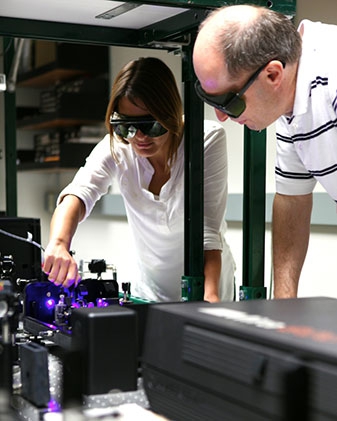In proteins with multiple binding sites, it is impossible to untangle affinity and cooperativity parameters fit to measurements of average occupancy, or total binding measurements. Therefore, we need to return to the experimental design phase in order to fit mechanistic binding models. Here in the Aldrich lab, we are working on developing a powerful site-specific binding measurement that employs luminescence spectroscopy methods. Our main application of this technique is measuring ligand binding at the individual EF-hands of calmodulin, a calcium binding protein expressed in all eukaryotic cells.
This site-specific binding measurement is just one component of the larger picture. In combination with highly sensitive limiting slope measurements, the site-specific binding measurement will allow us to solve for the elusive binding affinity and cooperativity parameters of paired binding sites for the first time. In addition, this powerful tool can be used to observe how calmodulin's binding partners modulate the affinity and cooperativity of the binding sites. Overall, this type of measurement will give us insight into how such a small and simple protein manages to find itself a major hub of eukaryotic calcium signalling, involved in literally hundreds of binding interactions in the cell.
